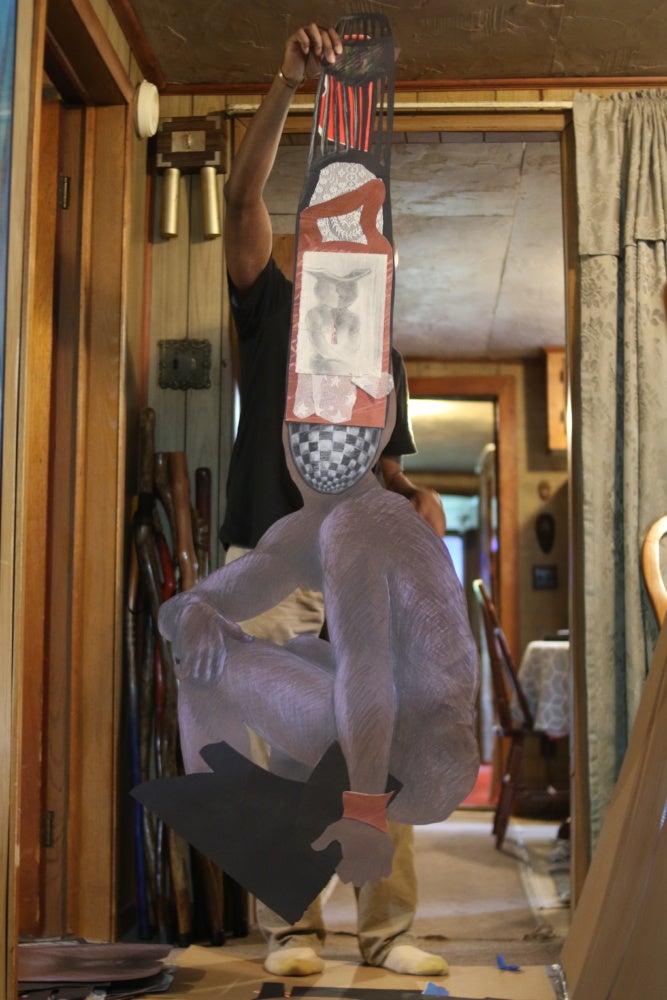In our feature Take Five, Burnaway highlights the work of five compelling artists living in the South. For a special edition of Take Five originally published in Laws of Salvage: The 2020 Burnaway Reader, we asked five curators around the region to briefly profile an artist who captured their attention this year. One of these curators’ picks will be featured on our website each day this week.

I was connected with artist Michael Ross in early 2017 through our mutual friend Jackie Francis. The three of us are all Black folks who have spent time living in the Bay Area. While Jackie Francis remains there, Ross and I have both moved back home to the South; Michael lives in Laurel, Mississippi, and I work in York, Alabama.
Ross returned to his mother’s home and his old bedroom carrying thirty years of his practice and the resulting objects, including drawings, paintings, collage, and textile sculptures that can either be installed in a gallery or worn as a robe. His influences include the draftsman John Biggers and the photographer Rotimi Fani-Kayode.
Ross frequently pictures abstracted, vibrantly colored, anthropomorphic houses, but he also often portrays Black male nudes. His textile works use new and found materials, such as his parents’ and siblings’ old sheets and pillowcases, and include narrative, figurative, and abstract motifs. Ross has worked with this particular iconography over three decades as a way to investigate shared and individual sites of emotional refuge, memory, and the Black male figure.
Ross’s works reconcile his difficult history as a caretaker during the AIDs epidemic of the early 1990s with the artist’s hope to catalyze open dialogue between the people represented in his practice: Black Mississippians, gay men in San Francisco, artists in the Southeast, and rural religious communities.
When we first met, Ross and I spent the day together—at his house but also in newly HGTV-famous downtown Laurel and a solid Italian restaurant. In his family home-cum-studio, he pulled his recently shipped work from tubes, boxes, and crates, all tightly packed, unbottling objects from a different time and a very different place. How do these figures feel here? Since my return, I’ve been concerned with queer space—histories of it in Alabama and Mississippi, making it for myself. I do this quietly because that is my way but also because that’s what feels safest in this new-old place. Watching Ross unrolling his figures felt like being welcomed into a circle, a space that we’ve been denied, whether because of geography, callous indifference, or time. It was a visit, a sit-down. These are men I won’t know, but we’re holding each other in Mississippi.
Jackie Clay is executive director of the Coleman Center for the Arts in York, Alabama.




